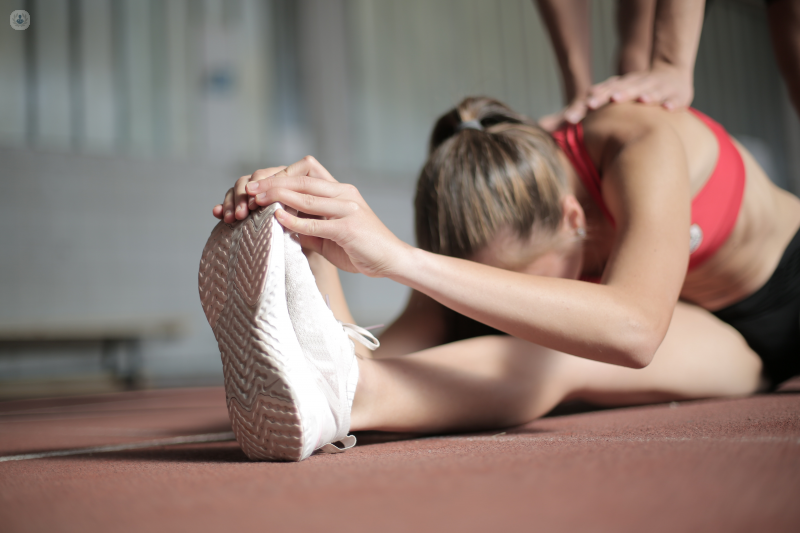calf muscle strain prevention
Autore:A calf strain can strike you suddenly and painfully. A sudden change in direction, an increase in speed, or any explosive movement can cause the muscle to strain and stop you from playing your favourite sport for a while. There are, however, simple and effective ways to reduce the chance of this happening. Orthopaedic surgeon, Mr Jonathan Walczak , explains what these are.

What is the anatomy and purpose of the calf muscle?
The calf muscle consists of three muscles: two gastrocnemii and one soleus.
The gastrocnemii are the chief calf muscles of the leg that flex the knee and foot. The soleus muscle is a flat, broad muscle that lies just below the gastrocnemmi. All of these muscles merge to form the Achilles tendon that is attached to the heel and is the thickest tendon in the body. They are powerful muscles that lift your heel from the ground when walking, jumping, climbing and running.
What is a calf muscle strain?
A strain in the calf occurs when there is acute overloading of the calf muscle - usually while the calf is lengthening and contracting at the same time - causing the muscles to tear.
We refer to this muscle strain as a tennis leg and typically happens on the medial gastrocnemius or the inside, upper third of the calf. It commonly occurs during intense exercise due to not properly warming-up or during vigorous activities in people aged 35 or over.
Normally, if just one muscle is torn, then a full recovery is to be expected after adequate rest and repair.
What are the symptoms?
The typical symptoms following a calf muscle strain may include:
- A sudden pop sound
- Pain in the calf
- Swelling around the leg
- Bruising
The bruising can run down the inside of the leg, sometimes as far as the ankle and typically develop over a few days.
If you are worried that the injury is more serious, try to lift your heel off the ground and stand on your tiptoes. If you can do this, even briefly, it is highly unlikely you have significantly damaged your Achilles tendon.
If you cannot, and there is marked pain and swelling, it would be sensible to be checked out by a physiotherapist or Orthopaedic Surgeon to make sure there is no significant injury that may need immobilization or even surgery. They would need to rule out an Achilles Tendon rupture or a more significant calf muscle tear.
Seeing a specialist is particularly important if you are on any medications that thin the blood - such as Warfarin, Apixaban or Xarelto - as these can make the bleeding inside the muscle much worse. It is essential to discuss with your doctor before stopping any medication.
Which physical activities can cause calf muscle strain?
Sudden jumping movements such as sprinting or lunging, especially during racket sports can cause a calf strain. The latter is particularly risky as the muscle is more likely to tear when being stretched out.
How can it be prevented?
The best way to prevent it is by adequately warming up before any exercise. This includes stretching appropriately and strengthening the muscles and tendons. This is even more important to do the older you are.
How is calf muscle strain treated?
Resting, applying ice, gently stretching and inserting a heel lift in your shoe for around three weeks usually helps to resolve the issue. It is very important to strengthen the muscle and tendon after this period of resting; your physiotherapist can show you special exercises called eccentric contractions that will help you to do this. Additionally, it is really important to take things gently to avoid re-injury until you are fully recovered.
If you have any of the symptoms mentioned in this article and would like to see a specialist, visit Mr Jonathan Walczak’s Top Doctors profile and book a consultation with him.


